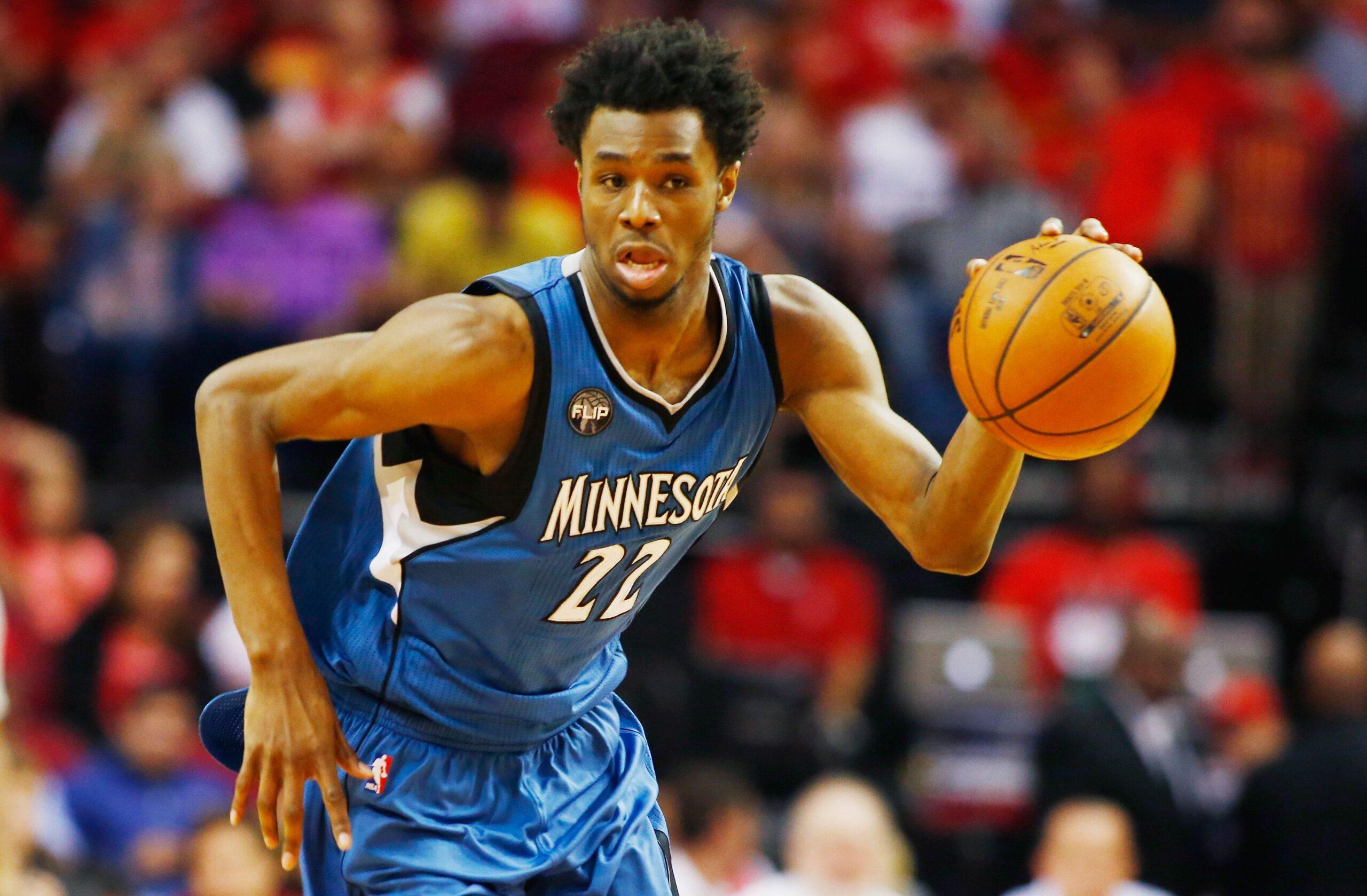
One of the craziest offseasons in recent history has not only shaken up the league’s hierarchy, it’s altered the path for several prominent teams and players heading into the 2017-18 season. For Golden Opportunity Week, the third of four weeklong series leading up to the tipoff of a new NBA year, we're taking long, hard looks at the most intriguing situations in the league—and what comes next for everyone involved.
The arrival of Tom Thibodeau in Minnesota last season was thought to be all the structure the Timberwolves needed to harness the incredible collection of young talent on the roster. But when a team employs a coach with a voice that hoarse, it needs a voice on the floor. Instead, the youth ran wild. There was always a disconnect between what Thibodeau envisioned and what the players were able to accomplish on the court.

Addressing that was the first, second, and third item of business for the Wolves front office this offseason. Thibodeau in Year 2 has seemingly adapted to his young personnel while also falling back into his most obvious habits. The professor has brought with him a cadre of TAs fluent in his language—Jimmy Butler, inarguably the greatest product of the Thibodeauian System, and Taj Gibson, the on-court lieutenant whose impact on team chemistry will likely outweigh his on-court contributions. There aren’t any excuses for anything getting lost in translation anymore. “I think everybody including myself is going to get tired of Thibs’ voice a lot of the times,” Butler said at Wolves media day. “So I'm going to have to be the guy to get his message and point across probably at a 90 percent tone of what he’s doing. So, yeah I’ll be there for that."
In trading for Butler, Thibodeau had a live model to show the results of his brutish coaching ways. Simply by being on the roster, Butler offers the young Wolves a vision of what they could be. No player is more greatly impacted by Butler’s presence than Andrew Wiggins, who may as well be playing with an older, more refined doppelgänger. In Butler and Wiggins, the Wolves boast two star wings with similar attributes—a partnership that feels familiar, but is something of a historical rarity. LeBron James joined Dwyane Wade and the Heat in 2010 as a small forward, but in his four-year stay he quickly morphed into a power forward. Kevin Durant, too, joined the Warriors ostensibly as a 3, but became a champion by playing down one, sometimes two positions. The Butler-Wiggins overlap is positional fluidity on a more orthodox level, reminiscent of the duo they spiritually succeed: Vince Carter and Tracy McGrady in 2000. “Tracy has the versatility and perimeter skills to play shooting guard and Vince is pretty much a pure 3, so we can play them together," said then–Raptors GM Glen Grunwald at the start of the 1999-2000 season.
There are parallels to be seen between those two sets of dynamic wing duos. Butler is what a fully developed Wiggins might one day look like: a new-age power wing who can score from the post, run a pick-and-roll, and ably defend at least three positions. McGrady had all the star qualities that Carter did in Toronto, but just wasn’t conditioned enough, either physically or mentally, for the NBA grind to maximize them playing alongside his “cousin.” Wiggins, 22, is still figuring it out, but he’s expected to be paid as though he’s already the Maple Jordan he’s often hailed as.

On paper, there could be no better mentor for Wiggins than Butler—someone to constantly be on his case when he loses focus, a confrontational locker room presence to wring out every bit of his competitive spirit. And while overlapping is indeed an issue on offense, it’s a virtue on defense. Minnesota’s best bet at fulfilling its destiny as a Thibodeau-caliber defense could rest in Butler and Wiggins being able to take turns on the best opposing perimeter players—as long as Butler can play both motivator and translator until Wiggins knocks the training wheels off. With Wiggins a (soon-to-be) expensive third option (behind Butler and Karl-Anthony Towns) on a rising team, there is more on his slate of responsibilities than just scoring off the dribble.
Yet Thibodeau referred to Wiggins as a “primary scorer” in his media day interview. Wiggins didn’t exactly back away from labeling himself a no. 1 option, either. “I know other guys probably think the same things about themselves, too,” he said. “It’s not in a selfish way, it’s more a way in believing what I can do.”
But basketball is an organizing principle. Hierarchies naturally form and distinctions in usage and role invariably become more pronounced. It will be interesting to see how Butler and Wiggins’s similar games begin to differentiate as the season progresses. Both made huge strides in their pick-and-roll ballhandling last season: Butler because he was the only viable, consistently available star on a team full of duds; Wiggins because Thibodeau wanted to empower a player who had a future on the team and not Ricky Rubio. Both used around eight possessions per game as the pick-and-roll ball handler last season, but Butler was the more efficient of the two within that play type, landing in the 77th percentile of all NBA players in efficiency (compared to 60th for Wiggins).
The difference in their effectiveness is largely a matter of maturity. Butler, now entering his seventh season, is fully attuned to his body and its capabilities. He was never the most explosive athlete, but he’s become excellent at leveraging his wrecking ball of a body—among players who averaged at least four possessions per game as the ball handler in a pick-and-roll, no one drew shooting fouls at a higher clip than Butler. Wiggins on the other hand was gifted with sublime athleticism, but his fundamentals are still playing catch-up. He rushes the pass coming off screens and often overestimates his ability to deliver a ball to the target he’s locked onto. His ballhandling is still often limited to the first move off his first step, which left many of his forays off the dribble coming up short—over a quarter of his field goal attempts last season came from the dead zone between 16 feet and the 3-point arc.
The ability to create with the ball in your hands is a hallmark for any go-to scorer, but the Wolves have a team built for more than just two wings taking turns being Kobe on offense. Jeff Teague is low-key one of the best pick-and-roll point guards in the league, and it would behoove the Wolves to establish two-man-game chemistry between him and Towns as soon as possible. Playing to the team’s strengths could mean flipping the court inside out, putting any number of Minnesota’s power wings (Wiggins, Butler, Shabazz Muhammad when he’s in the game) down on the blocks to attack smaller defenders, with big men like Towns, Gorgui Dieng, and Nemanja Bjelica spacing the floor.
After a solid, but predictable offensive season in his first year in Minnesota, Thibs has the option of diversifying the game plan with all his new acquisitions. Wiggins and Towns were both effective cutters last season, placing in at least the 82nd percentile; Butler was one of the league’s very best prior to last season, when his off-ball opportunities capsized because of his increased role as the lead ball handler. Adding Teague and Butler into the starting lineup will create balance by default: Towns and Wiggins accounted for a league-high 46.1 percent of the Wolves’ total points last season, according to NBA.com’s John Schuhmann.
It’s fair to wonder how Butler and Wiggins will both have the space to do what they do best. But skill sets only overlap in a vacuum; in practice, they spread out in gradations. For power dynamics to stabilize, egos have to be sublimated. Back in May, in a roundtable discussion on “the clutch gene,” Scottie Pippen joked to Rachel Nichols, Paul Pierce, and McGrady on The Jump that he didn’t possess the gene because Michael Jordan “took my clutch gene out of me.” In 1999, before McGrady left Toronto for Orlando, he envisioned his future with Carter: “The next Pippen and Jordan, that's what I see us being. … And I'm Pip.”
These are the precedents for Butler and Wiggins, but they only tell part of the story of Minnesota’s core. To find the closest approximation of Towns, Butler, and Wiggins in the past, you’d have to stare down ghosts of roads not taken. In many ways, the Wolves have actualized in 2017 the Magic’s Big Three of Tim Duncan, Grant Hill, and Tracy McGrady that was reportedly close to happening in 2001. McGrady looked back wistfully in 2013 about his decision to leave Toronto, reflecting the state of basketball at the turn of the new millennium. “There’s no doubt we could have contended for a championship,” he said.
Today’s NBA is on another level of talent—and the amount of talent a team has to have to make noise is staggering. The Wolves established an elite core for the foreseeable future with their draft-night trade, and over the course of three months, it’s become an afterthought next to the Rockets and Thunder, who have made legitimate championship additions. It’s a nice, modern problem to have. In a way, the Wolves found their gateway into the future through Towns, the unicorn that is at the core of so many new-age team-building operations in the NBA. But the dynamic that could define the Wolves’ success in 2017-18 and beyond is the same dynamic that defined the past two eras of basketball.

